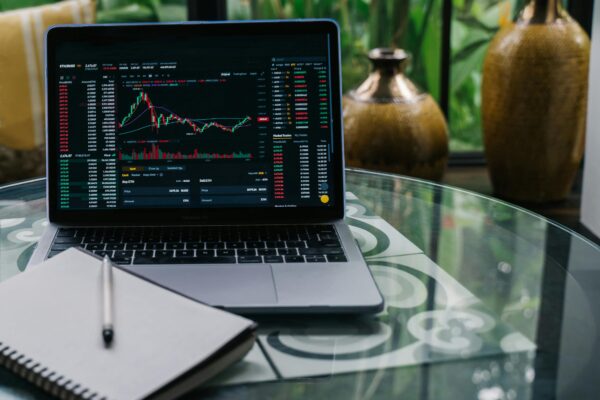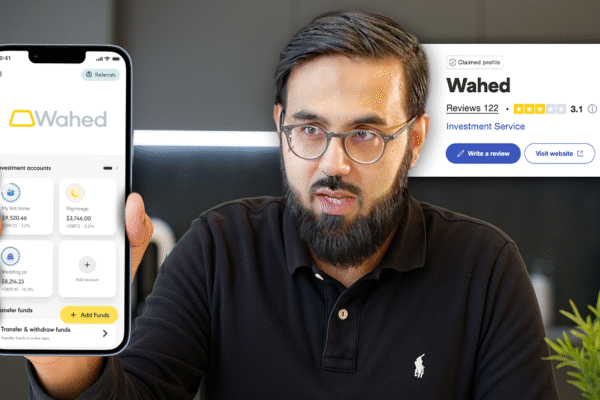
The £150bn Investment Wave Creating Jobs and Wealth (And How To Get Ahead)
23 September 2025 4 min read


Khizar Mohammad
Community Lead
7 min read
Last updated on:
The record-smashing 2021 saw the Saudi Arabian VC ecosystem grow by 270% year-over-year as startups accumulated $548M in funding.
Companies like Kitopi have raised an incredible $800m from global investors to build cloud kitchen software to serve international businesses. Today its investors and founders are worth billions. Even huge content creators like NasDaily have decided to shift to Dubai.
But why is so much money being pumped into the Middle East and North Africa and why is this region so hot? Is it likely we’ll see more Souq.com and Careems in the coming years or is this just a crazy mirage in the desert that will disappear without a trace?
In this article, we’re going to explore exactly why the Middle East is attracting the attention of venture capitalists everywhere, what the opportunities in MENA are as well as the risks and how you can get a slice of the pie yourself.
For those of you who don’t know, the aim of venture capital investors is to find the next Google, Microsoft, Uber and Amazon super early.
It’s about investing in startups or early-stage companies that are just getting off the ground and therefore getting a slice of the pie early on. We, the investors give them money, and they, in turn, give us a stake in the company. We therefore own a percentage of the company and therefore a share of the profit and any capital gains when they eventually IPO or get acquired.
But with high reward always comes high risk.
Startup investing is incredibly high-risk. For every AirBNB, Amazon and Apple, there are 30 other companies that failed. But with the ones that do win, you can make profits unmatched by most asset types.
From Snoop Dogg and Oprah to Justin Bieber and Arnold Schwarzenegger, it’s no wonder that every millionaire and billionaire has a sizeable chunk of their wealth invested in startups.
Think of it this way, imagine if you put $10,000 dollars into Amazon stock when it first listed on the stock exchange in 1997 for $18 per share, you’d have made $16,454,196 today. A venture capitalist would’ve gotten in even earlier, so would’ve made at least another 10x return on that, which would mean their initial investment of $10,000 dollars would be worth over $160 million.
That’s a pretty decent profit if you ask me.
To find out more about venture capital see our detailed guide here.
Where venture capital investors succeed the most is when there are wider macro trends giving huge tailwinds to certain sectors and geographies. Take the advent of the internet for example, and Silicon Valley as its epicentre. Or take China or India with their huge, growing young and educated populations. Or take any country that is either affluent already or quickly becoming affluent. These are all major trends you don’t bet against.
Our view is that the Middle East and North Africa – often abbreviated as MENA – is one of the most important areas globally for venture capital investors over the coming years.
First, the stats are clear. VC in MENA is growing 138% YoY.
Over the years we’ve seen some smashing unicorns come from MENA. A unicorn is any startup that went on to reach $1 billion dollars in valuation.
We’ve seen the likes of ridesharing app Careem hail from the UAE, which went to be bought by Uber for a staggering $3.1 billion.
We also saw Egyptian fintech Fawry, an e-payments company that processes 3 million payments A DAY reach a valuation of $1.4 billion at the end of 2021.
Not to mention, Saudi’s Stcpay is another unicorn payments company valued at $1 billion with Western Union having bought a 15% stake for $200m.
So as you can see business is BOOMING in MENA, but you’re probably wondering why?
Much of MENA has been blessed with material resources in particular oil; the regions collectively know oil is a finite resource and will inevitably run dry, so they’ve each come up with regeneration plans that propel their nations forward – Saudi and Egypt with their respective Vision 2030, UAE with its Abu Dhabi Economic Vision 2030, Qatar and its Fifa Football World Cup 2022 plans. The leadership of these nations are leaving no stone unturned in this mission, which is a major win for the region.
All their plans fuel economic growth which raises prosperity for the rest of the country. It also means that there is a ton of money sloshing around. That has only increased with the recent oil boom.
A key advantage is that the MENA population is amongst the fastest growing globally with 40% under the age of 25. 94% of the MENA population own a smartphone and 88% are active online daily.
Yet only 8% of MENA SMEs have an online presence. This combined with the highly digital, mobile-first young population as we’ve mentioned, and an increasingly developed economy equals a very fertile ground for economic activity. The middle class will be emerging in the next two decades and companies setting up now will benefit from that.
Exactly what you need to create an environment for startup culture.
The other key thing is that labour is still relatively cheap, the MENA is a nice place to live and the overall vibe is positive with economies regionally growing. Compare this to Europe where growth is now a distant mirage, populations are ageing and the general vibe is pretty pessimistic right now.
Now as always, things aren’t always black and white. There are a few risks with investing in MENA startups that you should definitely familiarise yourself with.
The biggest concern is the lack of education and sophistication in the region. While the population is young and raring to go, educational standards in MENA aren’t as high as they are in Western lands meaning that the workforce might not be on par today with what is needed to really drive these startups to success.
Access is also a serious issue – as startups are private companies, so trying to invest in them usually means you have to have deep roots in the venture ecosystem to even have a chance of getting into the top deals. This makes MENA VC, or just VC investing in general is out of bounds for most ordinary Joes like you and I.
But there are some solution.
There are roughly four ways you can get yourself a piece of the action.
Generally this method is for those who have more than £500k to invest and really know the startup sector inside and out. So you’ve got to be rich and super savvy in being able to figure out what startups have potential and which ones don’t.
Most people won’t really meet this criteria, but fear not there are other routes..
An angel syndicate usually refers to a group of investors who’ll source their own deals and pool their investment in together.
The upside with an angel syndicate is that they are usually led by an experienced lead investors who knows what they are doing. Syndicates also attract more dealflow as they are collectively putting in a sizeable chunk.
The downside with syndicates is that they are usually best for the earliest stages – when a startup is at its most risky stage, and because an angel syndicate is not an active contributor to a startup, you don’t get the benefit of having a representative properly looking after your investment day in day out.
A fund is a pool of assets managed by an experienced fund manager and he or she chooses a basket of startups to invest into.
This has several advantages – firstly only the best people in VC have the track record and technical ability to be able to raise a fund from the institutions who do careful due diligence. Secondly, pooling your investment across a range of startups significantly derisks things for you. Thirdly, the fund manager’s full time job, and remuneration depends on his startups succeeding, so he is properly looking after this startups every month.
However, the downside is that these funds are typically long-term – 10 years typically – and are usually reserved for HNW individuals who can invest seven figures or more, so these remain largely inaccessible to most.
Cur8 Capital is our investment arm. We negotiate our way into getting access to some of the top MENA VC funds and then we offer that to our investors at minimums of £5k. So you get the benefit of the best way to invest in VC – via a fund – but at a much lower entry ticket.
The type of funds we invest in usually have other investors such as the sovereign wealth funds of Saudi, Qatar, Oman, and UAE investing. So Zakariyyah or Sam from Manchester are literally investing alongside royalty.
We’ve been strong advocates for venture capital investing for a long time, because it is one of the few investment classes that can make life-changing returns. True it is not without high risk, but we think that if muslims are to level up financially, then sometimes these risks are worth taking.
The pendulum of power is swinging back to the East. The decline of the Western economies coupled with the rise of Eastern ones, especially in the Middle East has definitely turned the heads of many a savvy investor.
The question is: are you one of them?

23 September 2025 4 min read

26 August 2025 7 min read

24 July 2025 15 min read
Leave a Reply